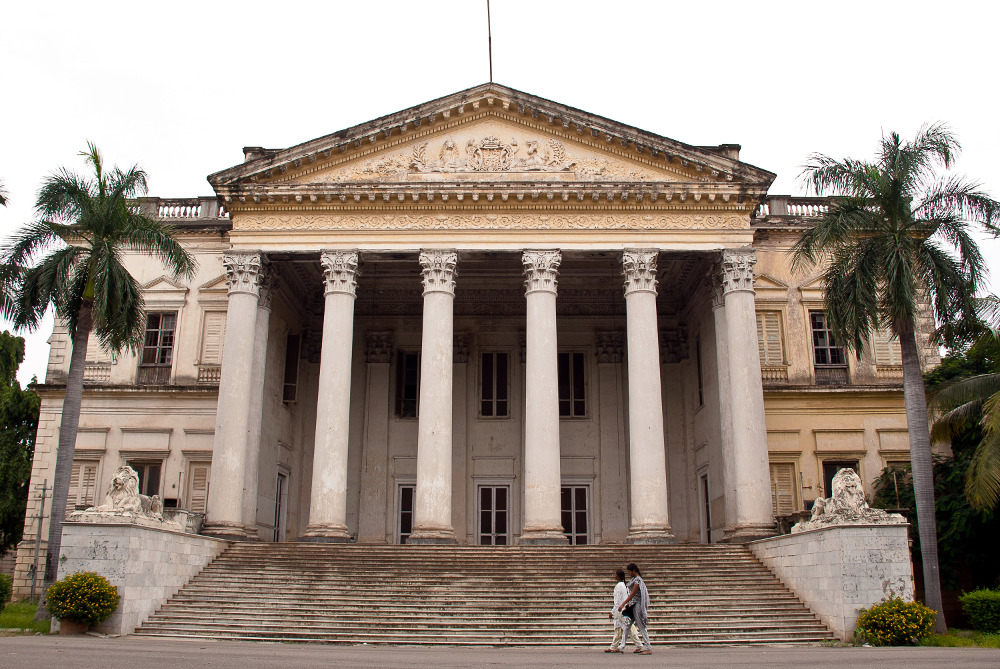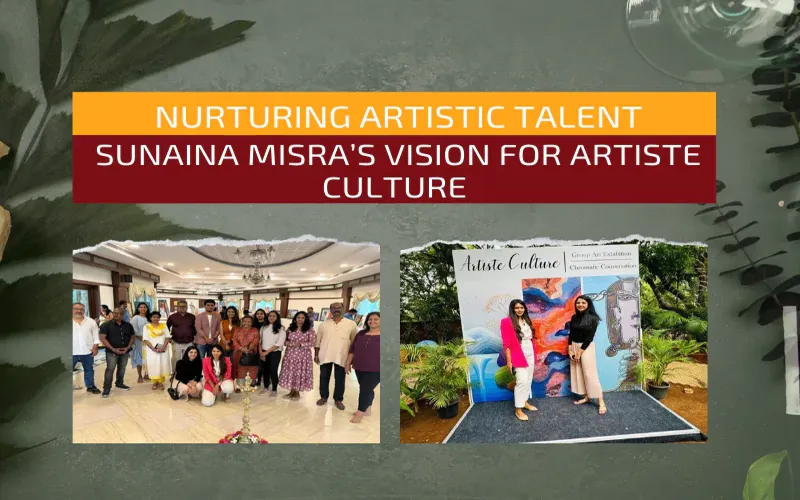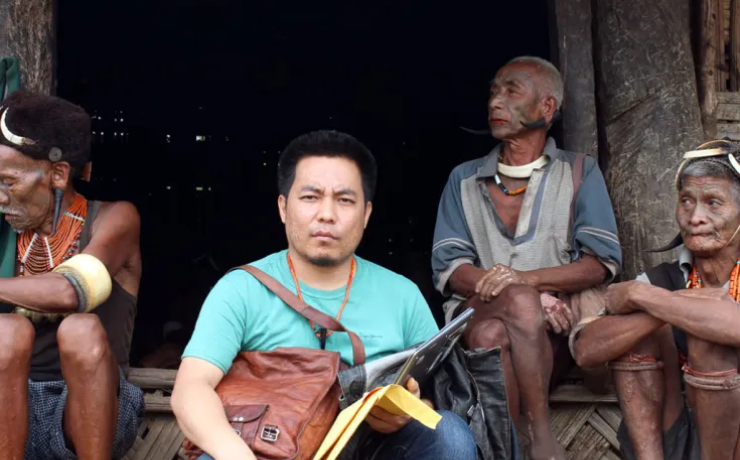Hyderabad has monuments other than the Charminar and Falaknuma Palace. Mallik Thatipalli details the doomed love story behind one of the best British Era structures in India, The Residency building…
A walk through the past
While Taj Mahal is famously referred to as the greatest testament of love (justifiably so), Indian history is littered with mammoth complexes which were built on the edifice of love. The British Residency Building in Hyderabad has a riveting story to share, which has all the makings of a bestseller – a majestic mansion built to house a doomed tale of love and its lapse into ruin only to be resurrected by painstaking restoration.
Built in 1805 as a symbol of opulence, the British Residency building was literally hidden away in the premises of the Koti Women’s college till a novel (The White Mughals by William Dalrymple) which detailed the love story at the heart of the building brought it back into the limelight in 2002. Few, including the students who study there, know the full extent of the rich story their premises store in its lavish staircases and luxurious galleries.
While Hyderabad is no stranger to opulent mansions, the Residency Building stands out even in the exacting completion it faces. Designed by Lieutenant Samuel Russell of Madras Engineers, it was built to impress and induce awe even amongst its grand visitors which included the then Nizam of Hyderabad, one of the richest men in the world.
Built in the neoclassical architectural style popular at the time, it’s massive scale (originally 60 acres, now reduced to 42 acres) combined with the fact that its location was on the banks of the River Musi ensured that it was the most sought after setting for social events. Garden parties, soirees and music mehfils by the stalwart artists of the day were held in its landscaped garden overseen by the memsahibs of the house.
The love story which inspired the building
Colonel James Achilles Kirkpatrick was the British Resident or Ambassador at the Indian court of Hyderabad between 1797 and 1805. Kirkpatrick had come to India full of ambition, intent on making his name in the subjugation of a nation; but instead it was he who was conquered, not by an army but by a Hyderabadi noblewoman called Khair un-Nissa.
An exceptionally good-looking man (his portrait was recently discovered in the store room of Salar Jung museum) his courtship of Kahir-un-Nissa was frowned upon both by his countrymen and the Hyderabadi aristocracy. Braving opposition the couple married in 1800 and Kirkpatrick not only adopted Mughal clothes and ways of living, but had actually converted to Islam, wrote Urdu poetry and became a double agent working against the East India Company and for the Hyderabadis.
Besotted by his wife, he started building an opulent mansion for her which even included a separate zenana quarters. Within the compound is a miniature model of the building and many believe that this was so Kirkpatrick’s wife, who remained in purdah, could see the entire mansion, including the front.
While the couple lived happily during the short duration of their marriage, their turbulent love story came to an end very soon owing to their early deaths. Since Kirkpatrick’s death, their erstwhile home was designated as the official residence of the British Residents to Hyderabad.
The opulence of the building
A vast villa surrounded by ancient trees, it attracts attention at first glance with an imposing edifice which boast of massive Corinthian pillars 40 feet in height. Sprawled at either ends are a posse of two lions at 60 feet space of 21 marble stairs.
As a former British Residency, it weaved its own magic with galleried halls and drawing rooms, a Durbar Hall of astounding proportions with chandeliers from King William IV’s Palace, painted ceilings, parquet floors of inlaid wood flanked by giant mirrors. It boasted of dungeons in the basement and oval ball rooms signifying the luxury and opulence the British Residents in India were accustomed to.
Generally recognized as one of the important British era buildings, others being the one in Calcutta and Fort George of Madras, it is a perfect Palladian building, and not many know that it is extremely similar in design to the White House in Washington DC.
The Story of its decay
When the British left Hyderabad in 1949, the Koti residency was converted into a women’s college, established in 1924. It is interesting to note that till the handover, the premises were maintained by the Nizam’s government. Between 1949 and 1952, the Residency buildings were modified and modernized for the use of Women’s college.
Neglect, coupled with the passage of time, proved detrimental to the very foundations of the centuries-old building. Due to World War-II and the ensuing Independence struggle, regular repair works which were the norm were ignored, and once it was converted into a college, regulations were thrown out of the window and buildings in the complex were modified as per need with no regard to the structural requirements.
The Residency complex further shrunk over the years and poor maintenance led to the collapse of structures – the sociology block and the Principal’s lodge were pulled down and replaced with new buildings. Newer buildings that did not complement the complex’s heritage status cropped up with blatant disregard of any norms.
It was ironic that the erstwhile British Residency needed a British citizen in author William Dalrymple to attract attention. The author embarked on a five year research which resulted in his influential bestseller, The White Mughals, which traced the doomed love story of Kirkpatrick and Khair-un-Nissa and brought the spotlight back on the gorgeous building tucked away in the folds of the fortress-like walls of the women’s college.
Restoration efforts
The path to conservation began from a White Mughals fan – an anonymous British donor who wrote a cheque for £1 million soon after the book was released. In 2001, the Residency was put on the 2002 and 2004 World Monuments Watch List as ‘Osmania Women’s College’. Soon after, thanks to the donation and the attention it received from Dalrymple’s work, a new story of conservation began.
It took 12 long years mired in red tape and activism for the restoration process to finally begin in 2013. Under the aegis of Government of Telangana and World Monuments Fund, the first phase of restoration was completed. The original structure underwent a lot of changes – dummy windows were added on elevations and the roof needed reinforcements. The first phase was an endeavor to safeguard the foundation so that further work could be carried on.
The first phase took four years of painstaking work and has made a world of difference to the structure. The work concentrated on restoring the ground floor which had a grand staircase flanked by oval rooms on both sides. The dungeons or treasury (the use of the rooms in the basement is unclear) apart from the oval rooms and ballroom in the first level were also meticulously restored, peeling away centuries of damage.
The restoration work wasn’t an easy task considering the scale and size of the project. A massive piece of wooden beam in the roof (weighing a couple of tonnes) was unstable and needed to be carefully modified, a mammoth task, considering the narrow openings. Each and every corner has similar stories to tell.
Reviving the Residency
The restoration of the Residency is still a work in progress. While the first phase of restoration concentrated on structural enhancement, the second puts onus on art conservation and restoration of the paper mache work in the premises
The Residency building was a testament to the power of Hyderabad during the British Era. It was in its lush gardens that legendary gatherings were once held which saw performances by famous courtesan/poetess of Hyderabad of the time, Mah Laqa Chanda Bai, and the landscaped precincts were witness to the nobility of the city, reciting verses penned by Ibrahim Adil Shah and Quli Qutb Shah.
It would also symbolically ensure that the monument of love which stood as a silent witness to one of the greatest love stories in India will be available for future generations in all its gargantuan glory.
Entry inside the building is restricted as it is a women’s college, but Hyderabad Trails conducts regular Heritage walks inside the premises and is a great way to learn more about this majestic structure.
- Housing the incredible love story of a British Ambassador and a Hyderabadi noblewoman, the magnificent building has lived through years of pomp, ruin and restoration
- The White Mughals by William Darymple brought the limelight back onto the monument after years of gradual decay
- Bolstered by massive Corinthian pillars 40 feet in height, the building hosted Garden parties, soirees and music mehfils in its galleried halls and drawing rooms, a Durbar Hall of astounding proportions, painted ceilings, parquet floors, and landscaped gardens.

































